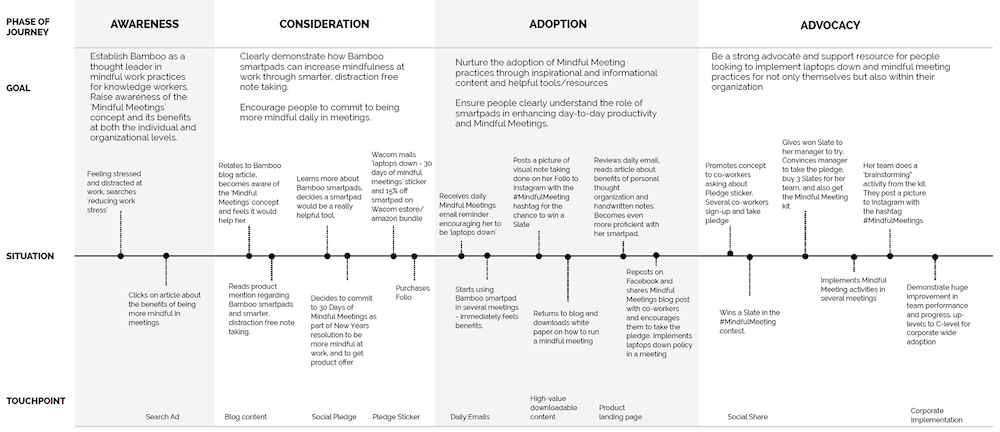Go Back
It has been over 20 years since Bill Gates infamously proclaimed ‘Content is King.’ With new technology, interfaces, user needs and trends, the proclamation still rings true as ever. No matter how innovative or engaging an interface is, without meaningful, compelling content any user experience falls short.
At roboboogie, we take content seriously as part of our optimization process. We believe that having great content is one of the key pillars to driving user engagement, satisfaction and ultimately conversion.
Over the coming weeks, we will work through a three part series called Have Great Content, where we will unpack our approach to developing a strong content strategy.
So let’s get started. Step one? Know your audience. Great content is all about matching copy, imagery and other media to needs of your specific user base by drawing in the right crowd and delivering value at the right time and place. Read on to explore these concepts in more detail below.
Context is critical
It’s true, the average human’s attention span is 1-3 seconds shorter than a goldfish’s. That leaves you with only 6-8 short seconds to capture your audience’s interest and get them to engage and interact with your website.
So, before you create any content, take time to understand exactly who your target audience is, where they are coming from, and what exactly it is they desire. Do your research and you will quickly see it’s time well spent. Simply asking 8-10 target customers what they want and expect from your website will inform your content strategy and ensure your site stays relevant.
Here are some compelling reasons to keep content contextually relevant.
When content is relevant to your users it:
- Immediately captures people’s attention, typically decreasing bounce rate.
- Provides your audience with what they want and need to increase engagement and session duration.
- Aligns with actions your target customers are already considering to improve, resulting in improved conversion rates.
TIP
Integrate interaction and paths to conversion into your content to streamline the user experience. This example showcases the integration of shoppable products within blog imagery for Bamboo. The result? A 20% lift in product purchase click-through.
Attract the right crowd
Having the right content on your site is not only critical to your customers finding and getting the information they seek to successfully convert, it’s also critical to ensuring your target audience finds your website through organic search.
Effective SEO deploys a number of content strategies to ensure visibility and reach. While our intent here is not to go too deep into those specific strategies, there are some high-level things to consider when looking to effectively attract and retain any specific audience group.
Know your audience – We use several audience profiling techniques including user profiles and journey maps to document user needs and desires. Focus groups and surveys are also extremely valuable.
Speak their language – Make sure you speak to your audience’s level of understanding. Also, keep in mind there will be some variability based upon where users are in their journey. It is important to address each phase intentionally.
Establish clear segmentation strategies and navigation paths – It’s not only important to speak your users’ language, but also to provide a clear path relevant to getting to that content.
Be prolific but stay focused – Blogs are great ways to provide your audience with authentic and less sales-y content that may reach a broader audience. Once primary content is optimized, it is important to broaden your reach and build awareness with new audience members. A cadence for regular content publishing is important as well. It’s good to put a lot of content out, but it is important to verify it make sure it at least ties back to some common industry or marketing theme, and is in alignment with your brand/industry/product offerings.
Make sure you are setup to convert – It’s great when your content efforts attract the right people to your website. But it is crucial to take the steps to ensure it’s even better when they convert. Implement ongoing testing to be sure you are constantly testing your home content approach and offers, and for conversion paths to meet and exceed your goals.


TIP
Start by laying a framework for your ideal customer journey. Exploring customer data (both qualitative and quantitative) and market trends, and overlaying with the ideal target customer can help bring the customer journey to life. In this example, we worked closely with Bamboo to help them understand their audience, and map the ideal journey to inform optimization strategy (including content).

We hope you’ve enjoyed the first part of our Have Great Content series. Continue reading along with the second part in the series here.


